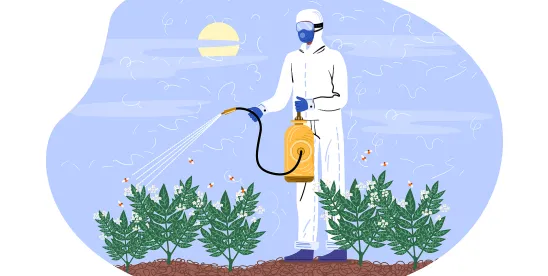On June 30, 2025, the Pesticide Action and Agroecology Network North America (PANNA) and several other non-governmental organizations (together, Petitioner) filed a Petition for Writ of Mandamus (Mandamus Petition) in the U.S. Court of Appeals for the Ninth Circuit to seek an order directing the U.S. Environmental Protection Agency (EPA) to act on a 2021 Petition to revoke all food tolerances and cancel registrations for organophosphate (OP) pesticides (OP Petition). The Mandamus Petition was filed pursuant to the All Writs Act, 28 U.S.C. Section 1651. Background regarding the OP Petition is available in our December 8, 2021, blog post.
In its Mandamus Petition, Petitioner states that in determining whether to grant mandamus relief, the court must determine that EPA is under a duty to act and respond to the OP Petition and that its delay is unreasonable. Petitioner states that EPA has continued to delay issuing registration review decisions on OPs and seeks the court to order EPA, within certain deadlines, to issue a final decision on the OP Petition for each of the 12 OPs. It asks the court to “direct EPA either to deny the OP Petition upon finding the OP uses safe, or grant the Petition and take the required regulatory action within one year.”
Specifically, the Mandamus Petition seeks the court to set the following deadlines:
- 90 days to grant or deny the OP Petition for the three OPs subject to 2024 proposed decisions — acephate, dimethoate, and malathion — and an additional one year for any required regulatory actions; and
- October 1, 2026, to grant or deny the OP Petition for the remaining nine OPs with an additional one year for any required regulatory actions. The requested October 1, 2026, deadline coincides with the statutory deadline for completing registration review for older pesticides, including but not limited to the OPs.
Additionally, the Mandamus Petition seeks the court to retain jurisdiction and require quarterly status reports from EPA until it makes final decisions subject to judicial review for each of the OPs.
Commentary
The timing of the current action is interesting since the OP Petition has been pending for an extended time and could have been filed before the end of the Biden Administration using the same arguments. That it was not filed sooner is perhaps a sign that Petitioners will push the Trump EPA more forcefully, or at least sooner, than what may have been expected under the previous decisionmakers.
EPA’s position is that the cumulative risk-cup issue — are there excessive risks from the class of OPs when added together since they share an already identified common mechanism of action — will be considered after each of the individual OP pesticides have completed registration review (insofar as human health risk is concerned). For some time, there has been evidence that since some of the individual members of the class may exceed their own “risk-cup,” then clearly evaluation of the entire class will exceed the standards.
The counterpoint to this argument is that as EPA evaluates each compound, some uses may be eliminated (at least as that individual pesticide is concerned — to make the “individual” risk-cup meet the standard). EPA will conduct a new cumulative risk assessment once the individual OPs have been evaluated, and the cumulative risk assessment can evaluate the remaining uses of the individual pesticides. This had been the approach outlined by the Biden Administration earlier, and it may not persuade the Petitioners continuing to wait.
What would remain problematical is that if after the individual assessments are complete, there may be a risk exceedance for the cumulative class. In that case, there is no clear policy (or legislative) guidance regarding how EPA might decide which tolerances should remain in force and which should not. It is not clear that if the group exceeds the standard, whether or not some of the uses can remain. If EPA were to decide some must go to make room in the risk-cup, how will those decisions be made?
The Petitioners argue that all OPs are unsafe and do not meet the standard alone or together. Even if EPA denies this petition in response to this new request, they may face a dilemma at a later time if the cumulative assessment indicates some, but not which, OP uses need to be removed to “fit” in the cumulative risk-cup.




 />i
/>i
